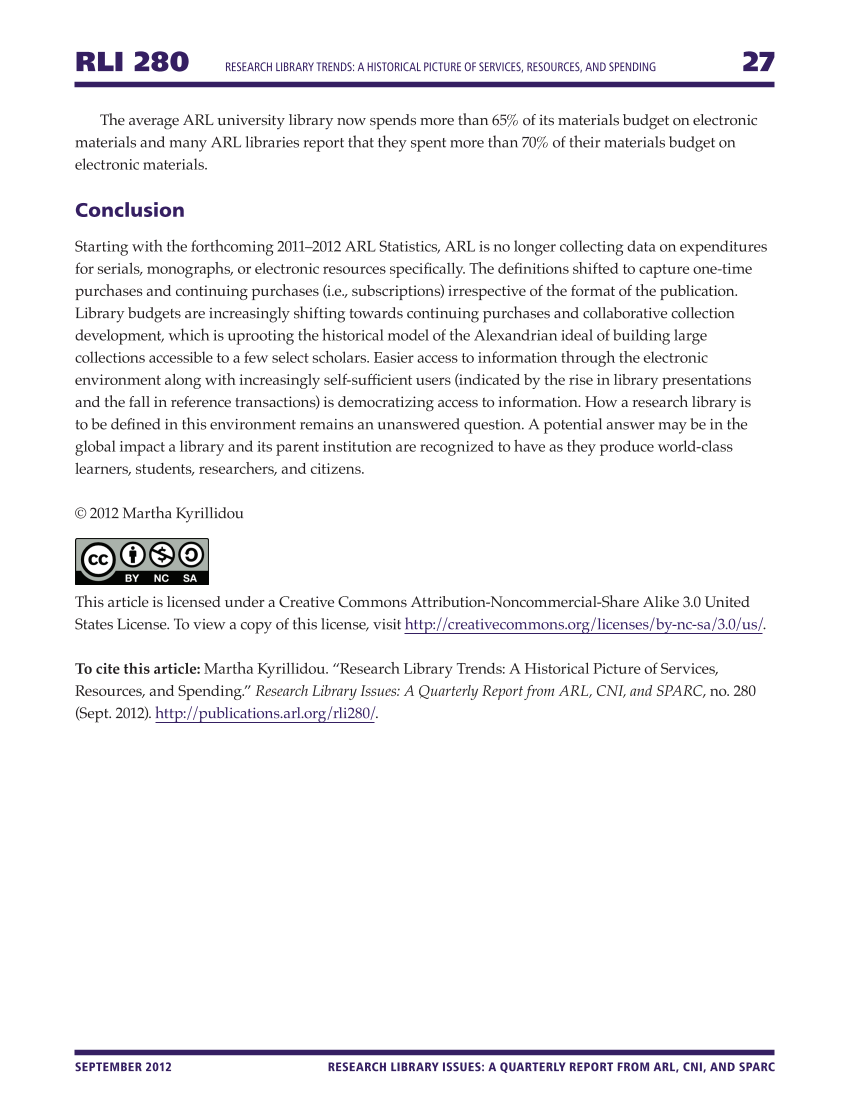RLI 280 Research Library TrRends: A Historical Picture of Services, Resources, and Spending 27 SEPTEMBER 2012 RESEARCH LIBRARY ISSUES: A QUARTERLY REPORT FROM ARL, CNI, AND SPARC The average ARL university library now spends more than 65% of its materials budget on electronic materials and many ARL libraries report that they spent more than 70% of their materials budget on electronic materials. Conclusion Starting with the forthcoming 2011–2012 ARL Statistics, ARL is no longer collecting data on expenditures for serials, monographs, or electronic resources specifically. The definitions shifted to capture one-time purchases and continuing purchases (i.e., subscriptions) irrespective of the format of the publication. Library budgets are increasingly shifting towards continuing purchases and collaborative collection development, which is uprooting the historical model of the Alexandrian ideal of building large collections accessible to a few select scholars. Easier access to information through the electronic environment along with increasingly self-sufficient users (indicated by the rise in library presentations and the fall in reference transactions) is democratizing access to information. How a research library is to be defined in this environment remains an unanswered question. A potential answer may be in the global impact a library and its parent institution are recognized to have as they produce world-class learners, students, researchers, and citizens. © 2012 Martha Kyrillidou This article is licensed under a Creative Commons Attribution-Noncommercial-Share Alike 3.0 United States License. To view a copy of this license, visit http://creativecommons.org/licenses/by-nc-sa/3.0/us/. To cite this article: Martha Kyrillidou. “Research Library Trends: A Historical Picture of Services, Resources, and Spending.” Research Library Issues: A Quarterly Report from ARL, CNI, and SPARC, no. 280 (Sept. 2012). http://publications.arl.org/rli280/.




























